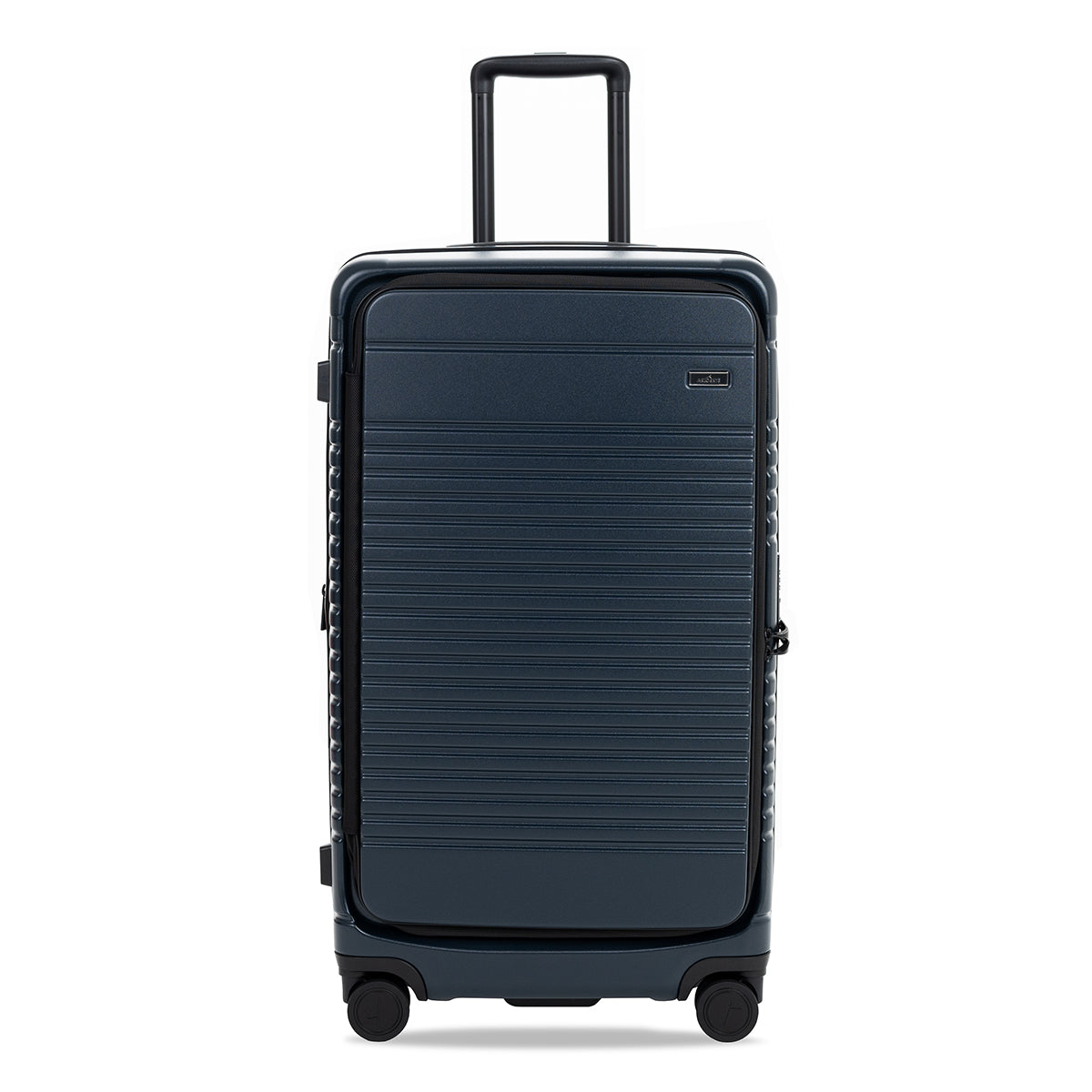They're OK to carry on board.
You can carry it on, or check it in providing you remove the battery and carry it on board with you. Why? While there’s still a risk of fire from these batteries, airline staff are more equipped to handle a fire in the cabin, versus one that erupts in the cargo hold. But take note: some airlines—Delta, for example—will require you to remove the battery from your smart luggage even if you’re carrying it on the flight, since extremely full flights often institute last-minute gate checks for carry-ons.
The term "easily removable" can be creative.
You might want to double-check that before your next flight. Many brands claim to have removable batteries—but their definition of “removable” can be a little creative. Some brands require you to open the suitcase, unzip the lining, and use a screwdriver to unlock an interior lid and remove the battery. Which kind of sounds like performing impromptu surgery on your suitcase in the middle of a busy airport while scrambling to catch a flight. Not fun. The best ones are designed so that you can pop the battery out with one click from the exterior. For your sanity alone, we recommend them.
Battery quality really does matter.
Without getting super geeky, you should know one major thing about lithium batteries: their quality isn’t standardized and varies greatly. Poor battery quality can lead to overheating and fires, so you should choose a smart luggage brand with a battery that has integrated surge and short circuit protection. Batteries with lithium-ion cells tend to be safer than those with lithium-polymer cells, and they also hold more efficiency and have a lower chance of overheating. To make sure your battery is top quality, we recommend finding out if your cells are manufactured by a reputable brand. For example, Arlo Skye sources its cells exclusively from LG in Korea and Panasonic in Japan.

The tech inside your battery makes all the difference.
It should have at least a 10,000 mAh capacity (but not too much more, since gigantic batteries aren’t allowed on planes). This level of capacity ensures that your phone will be charged 4 to 5 times over. Want super-fast charges? (FYI: waiting 7 hours for your phone to charge does not count as fast). Get a 2.4A port. Most chargers have a 1A port, which is OK, if pretty slow. If you want to get really next level with your charger, find one that features QC 3.0, which charges android devices 75% faster than a conventional charger. Or get USB C technology, which charges USB C-enabled devices, including the new Apple MacBooks.
Suitcases that allow you to pop out the charger and bring it with you when you're out and about are the way to go. That way, if you're heading to the Met or the beach, just bring along the charger for extra power. Brands like Arlo Skye also plan to offer charger upgrades over time, so you can make sure your travel piece is always on par with the latest tech.
Want to learn more? Have a look at the Arlo Skye Carry-On.










